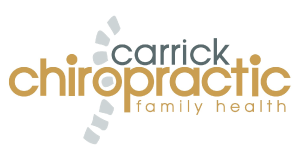← Be Kind to Your Body! Migraine Awareness Week 7th – 13th September →
Disc Problems?
August 13, 2014

Between the vertebrae of your spine are 23 discs, which act as a spacer and shock absorber. These discs have soft, gel-like centres surrounded by layers of fibrous tissues.
Sometimes, due to an injury or just ageing, the material in the middle of a disc pushes to one side or even ruptures. Many people will have heard the term ‘slipped disc’ but this is a rather inaccurate name, as discs actually cannot slip. They can wear, bulge or herniate.
Where it occurs: Bulging or herniated discs can appear in the Neck (Cervical Spine), Low Back (Lumbar Spine) and middle and upper back (Thoracic Spine).
♦ The severity and location of the pain depends upon which disc is herniated and how large the herniation is
♦ Pain may spread over the buttocks, down the back of one thigh and into the calf
♦ Pain may be in one or both legs
♦ Numbness, tingling, or weakness in the legs or feet
♦ Bowel or bladder changes
♦ Inability to find comfort, even lying down
♦ Inability to fully straighten your neck or back
♦ Numbness, tingling, or weakness in one or both arms
Since spinal discs have a poor blood supply, they depend upon the circulation of joint fluids to bring in nutrients and expel waste. If a spinal joint loses its normal motion and this pumping action is impaired, the health of the disc deteriorates. Like a wet sponge, a healthy disc is flexible. A dry sponge is hard, stiff, and can crack easily.
Factors that increase your risk of a herniated disk may include:
• Age. Herniated disks are most common in middle age, especially between 35 and 45, due to aging-related degeneration of the disks.
• Weight. Excess body weight causes extra stress on the disks in your lower back.
• Occupation. People with physically demanding jobs have a greater risk of back problems. Repetitive lifting, pulling, pushing, bending sideways and twisting also may increase your risk of a herniated disk.
The medical approach to disc problems is often a combination of pain killers, muscle relaxants or surgery.
If the medical treatments fail, then back surgery, usually performed by an orthopaedic surgeon may be suggested. The surgery often performed is called a laminectomy. It can involve the removal of the back of the vertebrae and the scraping away of the disc. With no disc between them, the vertebrae may fuse into a solid bone. In some procedures pieces of bone are scraped away from the hips and are applied to the exposed vertebrae.
The chiropractic approach to disc problems is to help restore better motion and position to the spinal joint. Besides reducing disc bulging, better spinal function helps reduce inflammation and begin the slow process of healing the surrounding soft tissues can begin. Many patients have avoided needless surgery or a dependency on pain pills, by choosing chiropractic care. The traditional approach to disc problems often ignores spinal function. Chiropractic care is safer and often more effective than back surgery.
In one study 27 patients documented with disc herniation received chiropractic care. Post MRI scans revealed that 63% of patients had a reduced or reabsorbed disc herniation, and 78% returned to work.
In another study 21 patients were diagnosed with a lumbar disc herniation. After chiropractic care their pain disappeared and follow up scans six months later showed the herniation had reduced or disappeared in most patients.
In another study of 517 patients with protruded lumbar discs, 76.8% had satisfactory results under chiropractic.
Chiropractic care may help prevent your spine from deterioration and herniation. Chiropractors have even helped people relieve the pain and frustration of failed back surgery (yes, you can receive chiropractic care if you’ve had spinal surgery) and even prevent future operations.
Before your problems get worse, have a simple chiropractic spinal checkup.
chiropractor, ballyclare, newtownabbey, back pain, neck pain, sciatica, disc herniation
← Be Kind to Your Body! Migraine Awareness Week 7th – 13th September →


Leave a Reply
You must be logged in to post a comment.